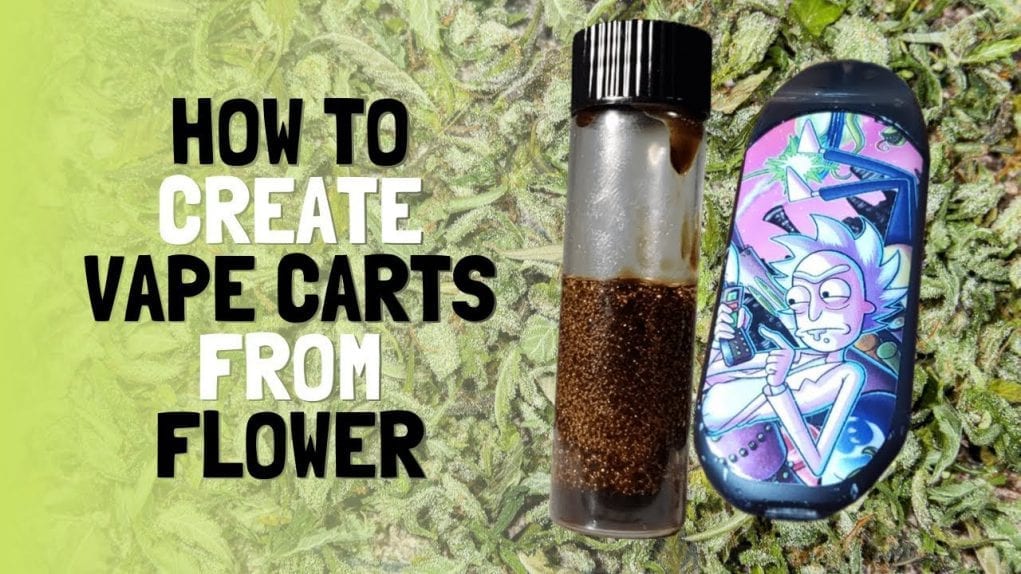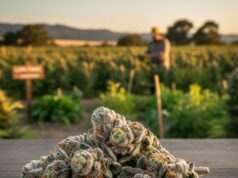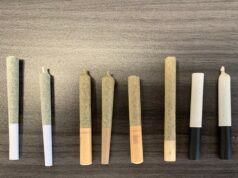Here we go through how to turn weed into vape oil. With all the scare over fake cartridges, many people are turning to make your own options. This goes through everything from start to finish. You will start with flower and end with THC oil you can pop into a cartridge.
Weed to vape: Turning straight flower into oil you can hit from a cartridge
Step #1: Weed to Rosin
If you follow our HOWTO category, you know how to press rosin from flower. You also have several options for obtaining rosin from flower. Once you have rosin, you know that heating it will decarb it – which is to say, turn THCA into THC. See sidebar at the end for why we do this.
Here’s another in-depth write-up on rosin and what to do with it.
Light vs dark rosin
For this video low quality rosin was used. The darker the rosin the more waxes and other plant material contained. The lighter the rosin the easier it will be to filter and less terpenes needed.
Step #2: Decarb
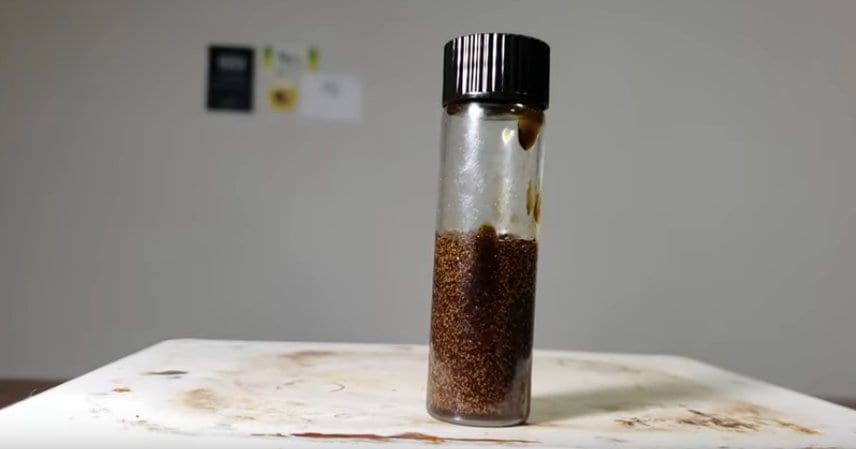
Decarb your rosin in a glass vial on a hot plate. Set the temperature at 220°F (104.4°C) for 30-40 minutes. Be careful not to let the temperature get too high; Terpenes and cannabinoids tend to start breaking down around the 310°F (154.4°C) mark.
Step #3: Add terpenes
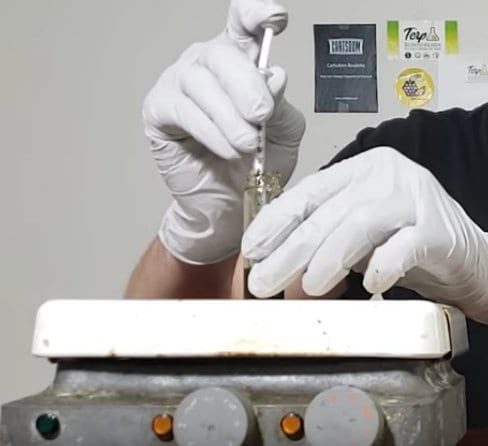
Lower the hot plate temperature to 150°F (65.5°C). Get out whatever terpene blend you have to use (we’ve also covered blending your own terpene profile). The more terpenes you add, the more diluted your concentrate gets, and the easier it will be to filter. This is actually going to be important in the next step.
You want to keep the temperature at or below 150°F (65.5°C) so that you don’t damage the terpenes too. You need to keep applying heat and mixing it until the batch is perfectly blended.
Step #4: Filter the mixture
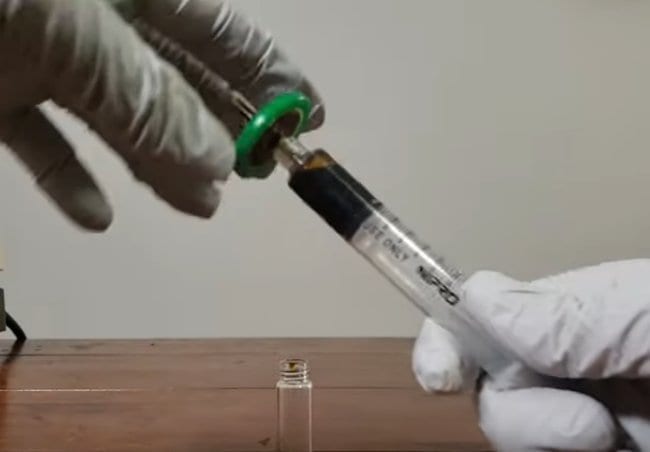
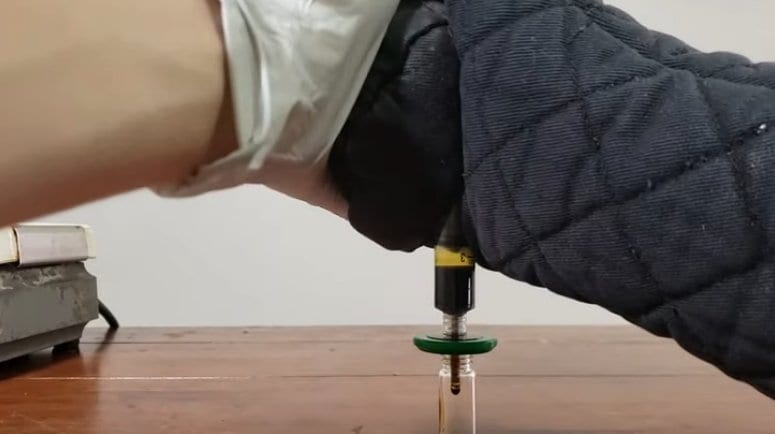
This is where it gets tricky. You want to filter out things like wax, fats, lipids, and other pulpy bits of plant matter. To do so, draw some of the mixture into a syringe, attach a syringe filter to the end, and squeeze it through.
This takes some muscles! Do not apply enough pressure to break the syringe. You want a drip approximately every three to six seconds, which is the optimum rate for a syringe filter. Filters will clog up, which happens faster if your rosin is very dark or thick. See an in-depth tutorial on just filtering THC vape juice here.
As the video points out, this is being done with low-quality, dense rosin. John is doing this by request to show it can be done. Lighter, higher-quality extracted rosin will be much easier to work with.
Step #5: Condense juice
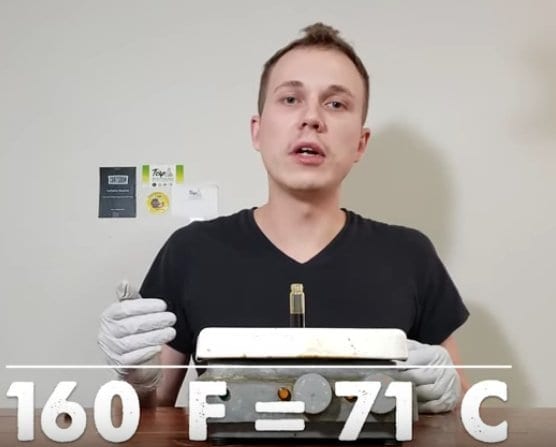
Back to the hot plate with your filtered vial of juice. This time you want 160°F (71.1°C) for about half an hour. We’re doing this to burn off the excess terpenes that we used for processing in the previous step.
Step #6: Fill it into pods
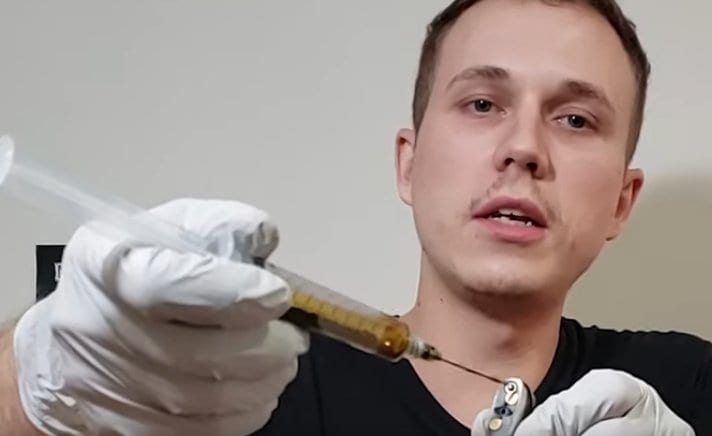
We’re finally ready to fill this THC juice into cartridges and call it a day. Heating up your mixture will make the liquid easier to work with – it tends to solidify when cooled. John here uses a CCell rig, which is an excellent choice.
The juice should be left to settle for a minimum of 15 minutes before you hit it for the first time. Best results are obtained letting it sit 24 hours.
Sidebar: Why we decarb
This bears emphasizing: THCA (Tetrahydrocannabinolic acid) will not get you high. Hence just chewing the raw plant doesn’t do anything. You have to apply heat in order to release the actual THC (Tetrahydrocannabinol). There are a number of methods to do this:
- Smoking – Set it on fire, so easy a caveman can do it.
- Dabbing rosin – Extract + high heat
- Decarbing – Apply the heat without consuming it, producing a concentrate which contains THC freely.
- Baking – You can simply bake weed, extract the THC using an edible oil solvent, and go from there straight to edibles.
Once the THCA has been treated with sufficient heat, it is now THC and effective no matter if you eat it, drink it, or vape it. Why do we have to decarb it to use in vape oil when we don’t have to decarb rosin to dab it? Because dabbing uses higher temperatures, where vaping uses very low amounts of heat. The heat from vaping isn’t enough to decarb it, just enough to turn the oil into a mist you can inhale.
We stress up front: There is a HUGE difference between an edible oil and vape oil. We go through the step of filtering below because vaping lipids is bad for you. When we mention above baking weed and extracting it using edible oil (typically coconut oil), it is also not safe to vape. The bottom line is that your stomach can withstand all kinds of roughage that your lungs are too delicate to handle.
Conclusion
From following this tutorial and the others we link to, you should now have a pretty clear picture of the entire production chain going from the raw plant to vape oil, and several other consumption methods besides. You can also see where things like shatter, which uses a solvent to extract the THC, makes sense now, since it’s less labor-intensive. Here is our guide to decarbing shatter, and another guide on making homemade vape juice.
You can also see where black market cartridges can be risky – it’s not just a matter of dishonest sellers, it’s a matter of the person filling the cartridges knowing what they’re doing. There’s many steps where something can go wrong.
For those of you playing along at home, discussion is welcomed in our comments or in our forums. Hope we’ve given you a comprehensive education! Our shout-out to HowToWeed for the video tutorial as always, and be sure to check out that channel for many other video guides.


